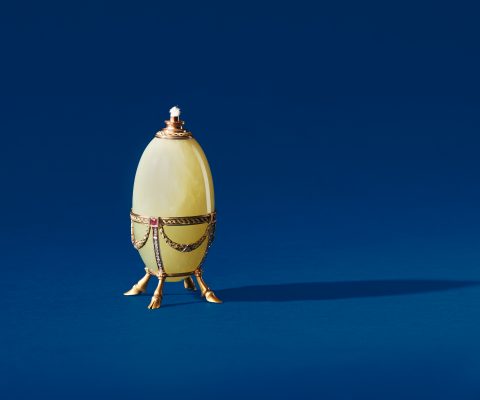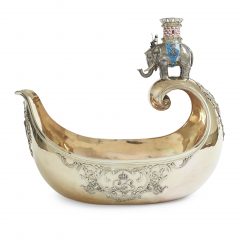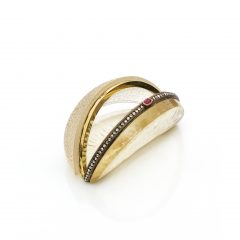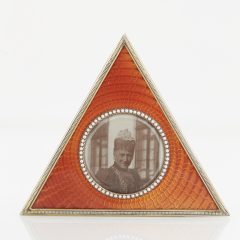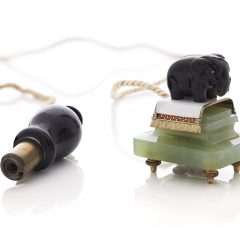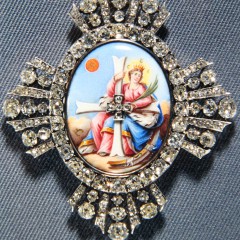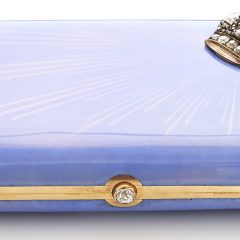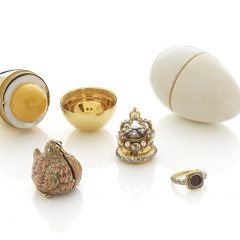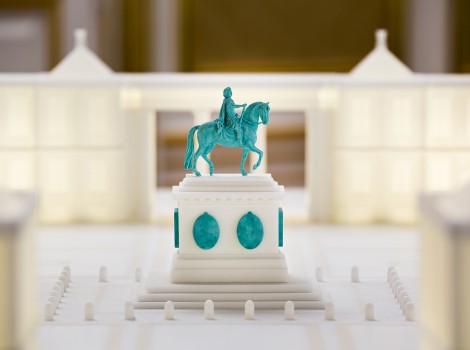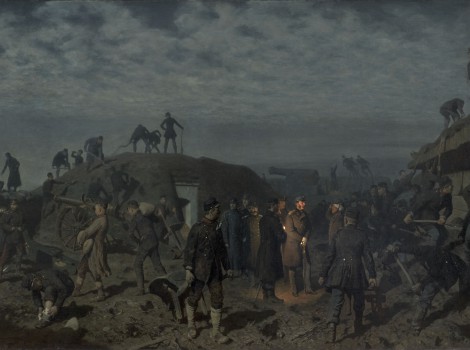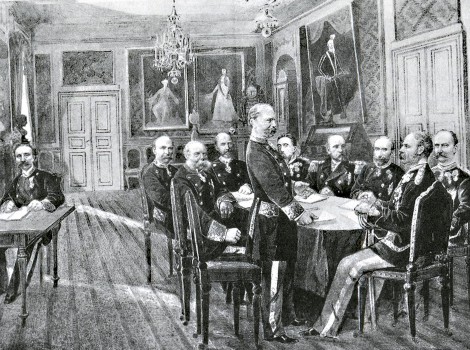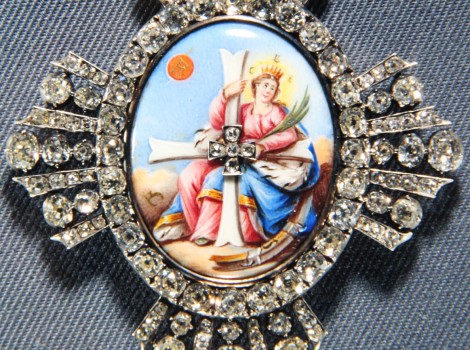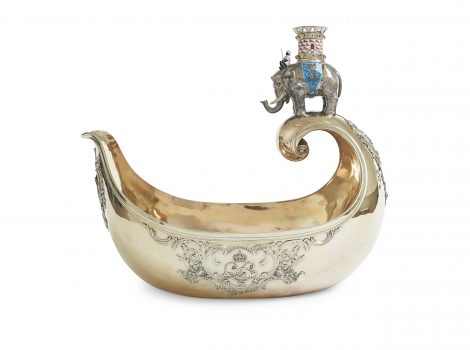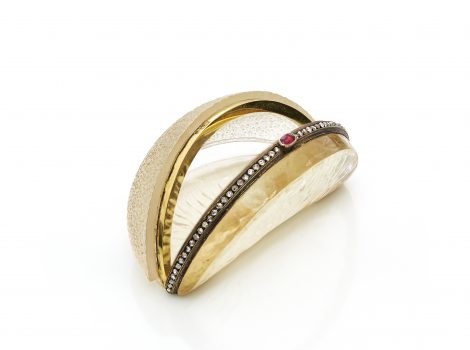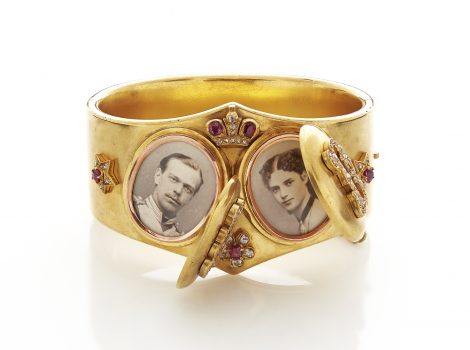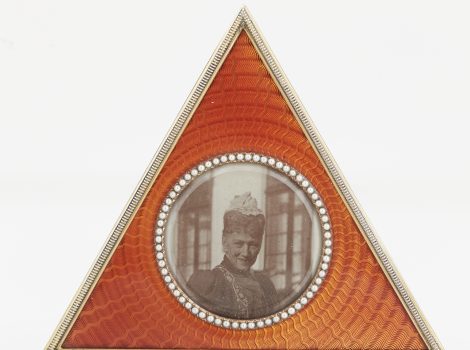| 58. |
Nicholls & Plincke, St. Petersburg 1870s.
Seal made of gold and smoky topaz. It makes the mark of a crowned mirrored L monogram in a garter, which is something of a mystery, since neither Queen Louise nor her daughter-in-law Queen Lovisa were members of the British Order of the Garter. |
| 59. |
Nicholls & Plincke, workmaster S. Arndt, St. Petersburg 1870s.
Seal with blue handle of lapis lazuli, which belonged to Christian IX. Under a seal with the Danish coat of arms are two other possibilities hidden: the King’s mirrored monogram with the figure IX and crown, and innermost a small mirrored C with a crown. The seals thus become progressively more personal. |
| 60. |
Unknown, c. 1900. Property of HM Queen Margrethe II.
Paper knife of green nephrite with rounded ends. At one end the cyrillic initials ‘MB’ are seen in gold, and above these a rather strange Russian crown. The initials do not fit the House of Romanov or their closest family, but may indicate Maria Pavlovna (grandchild of Alexander II) and Prince Wilhelm of Sweden, who married in Russia in 1908. |
| 61. |
Fabergé, workmaster M. Perchin, St. Petersburg 1901. Property of HRH Princess Benedikte.
Paper knife with a blade of green nephrite. Gold trim with light red enamel over a guilloché ‘fish scale’ pattern, and tiny rose-cut diamonds along the edge. The paper knife was most likely bought from Fabergé by Maria Feodorovna in 1901. |
| 62. |
Fabergé, workshop unknown, 1895. Property of HM Queen Margrethe II.
Paper knife of transparent, slightly light green nephrite. Pointed at one end and rounded at the other, with inlaid cyrillic letters in gold: POMNI (remember). A paper knife with this inscription is noted on an invoice from Fabergé to Maria Feodorovna. |
| 63. |
Fabergé, workshop unknown, c. 1900. Property of HM Queen Margrethe II.
Small, curved paper knife of green nephrite with gold rocaille at the narrow end. Can with great certainty be attributed to Fabergé due to the exquisite design in Louis XVI style and the detailing of the gold. The paper knife previously belonged to Queen Ingrid. |
| 64. |
Fabergé, ascribed to workmaster A. J. Nevalainen. St. Petersburg between 1899 and 1904.
Tray for writing implements made of mahogany with silver holders. The little button used to open the locked lid is set with a ruby. There is a punched frieze of silver laurel leaves along the tray’s edges. One of Fabergé’s simple but luxurious utilitarian objects. |
| 65. |
G. Klingert, workmaster A. Spiridonov, Moscow 1892.
Gold box for stamps with six separate spaces. The surface is decorated with cloisonné in a honeycomb pattern, with the blue, red and white enamel forming a pattern of stylized flowers. Belonged to Christian IX. |
| 66. |
Fabergé, workmaster A. K. Ringe, St. Petersburg 1901. Property of HE Count Ingolf and Countess Sussie of Rosenborg.
Gold pencil cover with removable cap, decorated with red enamel on a guilloché zig-zag pattern. Made by the female jeweller Anna Karlovna Ringe, whose workshop produced a number of small objects in gold and silver for Fabergé. |
| 67. |
Grachev Brothers, workmaster A. Petrov, St. Petersburg 1890s.
A simple small gold cup with red enamel on a guilloché ground. It is probably meant for drinking vodka, and it is therefore a matter of taste whether it belongs on a writing desk or not. The company is primarily known for cloisonné, but also mastered the guilloché technique. |
| 68. |
Fabergé, workmaster K. G. H. Armfelt, St. Petersburg between 1899 and 1904.
Electric bell push in French Empire style with two pushbuttons. The wooden surface is decorated with a silver swan with spread wings and bent neck, which sits on a sort of console or vase. Silver gilt laurel vines, hung with fluttering ribbons, spread from the sides. It was used by Christian X to call his courtiers. |
| 69. |
Fabergé, workmaster M. Perchin, St. Petersburg between 1899 and 1903. Property of HRH Princess Benedikte.
Plinth-shaped bell push made of bowenite on four spherical feet. A panel on the upper surface is covered with a clear red guilloché enamel, which radiates from the button — a moonstone encircled by small gold pearls. Entwined gold laurel wreaths surround the button, and on the sides are gold arrows entwined with leaves. |
| 70. |
S. Arndt, St. Petersburg c. 1870.
Silver paperweight with photos of the Grand Ducal heirs to the throne Alexander (III) and Maria Feodorovna, who is on the opposite side. On the surfaces twine stylised silver flowers with inset lapis lazuli stones, some of which have fallen out. |
| 71. |
S. Arndt, St. Petersburg, before 1896. Property of HM Queen Margrethe II.
Paperweight with a photo of Maria Feodorovna. Rock crystal with a finely crafted piece of birch stem in silver, which can be slid back and forth over the oval photo frame on a spring. |
| 72. |
Unknown workshop, St. Petersburg between 1850-75.
Paperweight with a figure of a boy sledging on a block of rock crystal with a polished surface. The boy seems to be about to fall. Such compositions with silver figures and gemstones were produced by several companies at the time. |
| 73. |
I. Lagutyaev, Yekaterinburg 1850-1875.
Paperweight made of Kalkan quartz with an arrangement of berries and grapes made of various gemstones — leaves of serpentine, grapes of amethyst, raspberries of rhodonite from Ural, and unripe berries of quartz. A characteristic piece of stonecutting from Ural, where many berries of this type were cut using stones from Ural, Siberia, and the Alta mountains. |
 Dansk
Dansk
 English
English
 Deutsch
Deutsch



